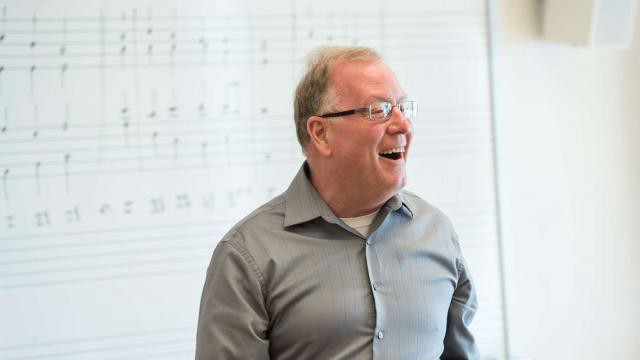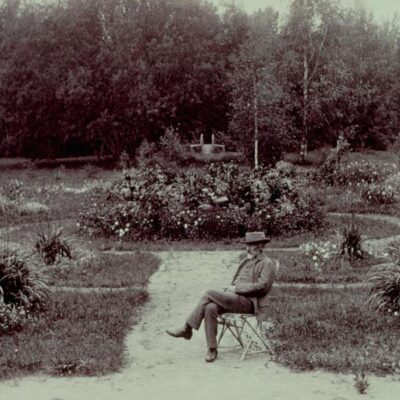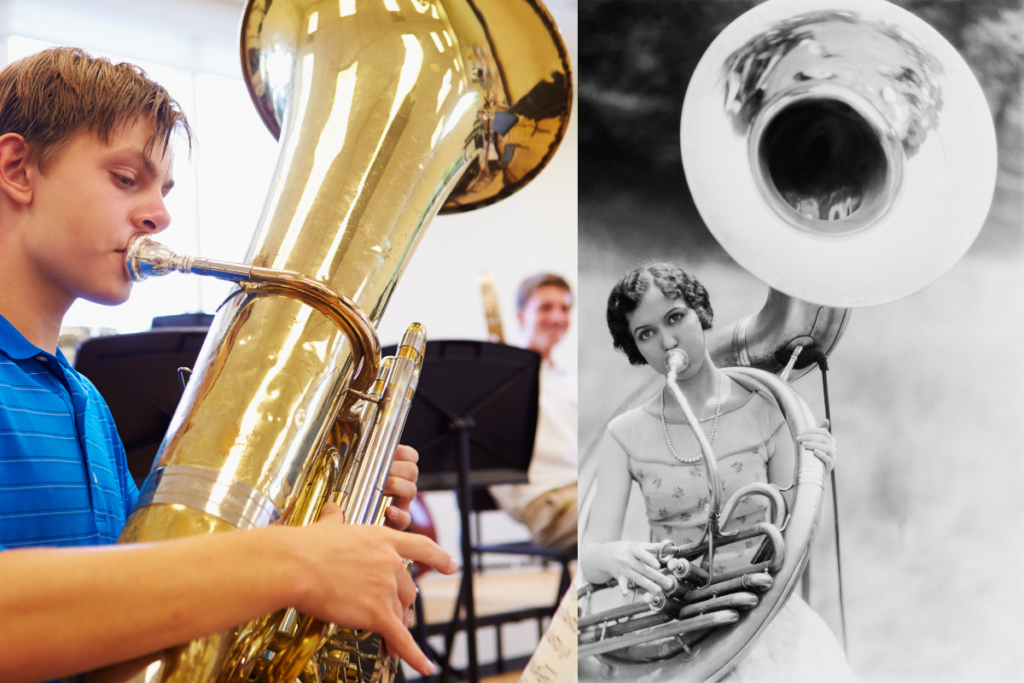
Wynton Marsalis uses a drum kit, sousaphone, and other non-traditional orchestra instruments to evoke the spirit of Bourbon St and his native New Orleans in his genre-bending Violin Concerto. We got down to brass tacks with Principal Tuba Forrest Byram to understand the differences between the tuba and the sousaphone, and their less famous love-child, the helicon.
What’s the difference between a tuba and a sousaphone? (No, not the beginning of a joke.)
The Violin Concerto by Wynton Marsalis calls for both tuba and sousaphone, which are played by the same musician. The only significant difference between the two is that the sousaphone is shaped to wrap around the musician, resting on the shoulder, while the tuba is held in the lap. They are both played by vibrating the lips into the small end of a basically cylindrical brass tube.
On the face of it, the tube part seems obvious, but the actual shape of the tubing is of great importance.
TLDR: Cylindrical tubing = mellow and dark; conical = bright and piercing
Brass instruments are made of both cylindrical and conical tubing. The conical part of the instrument is most obvious where the tubing flares into what is known as the bell. (This, it might be noted, is the part you don’t want pointed directly at the back of your head. That is the reason people in front of the trumpets have sound shields.)
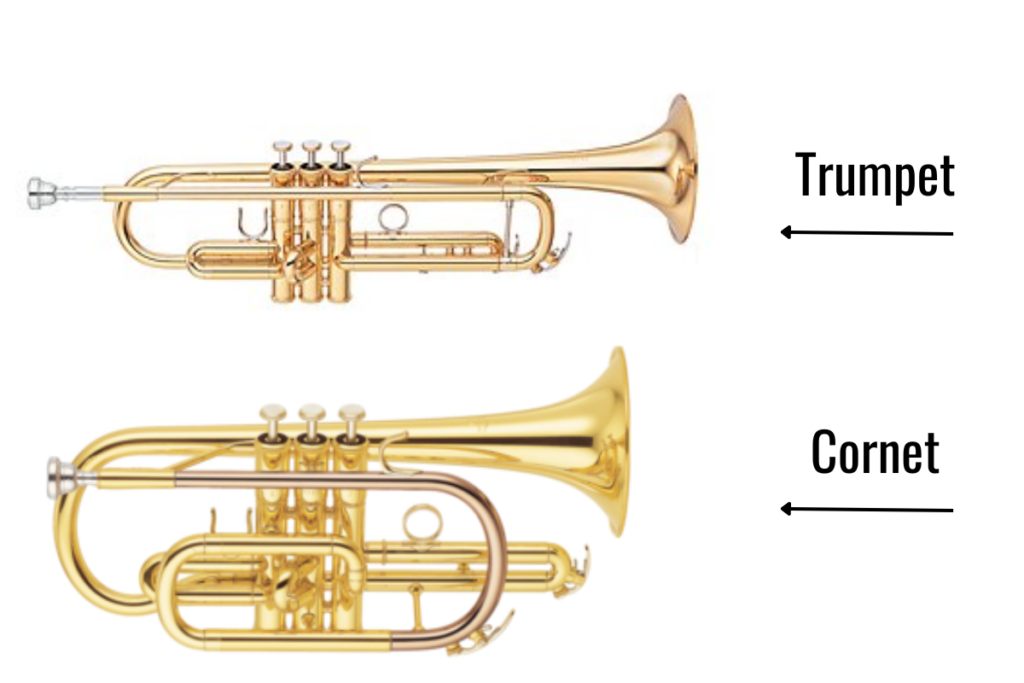
The trumpet and cornet are, perhaps, the best examples of the difference between cylindrical and conical tubing. Although they look very much the same, the trumpet is basically a cylindrical instrument, whereas the cornet is almost completely conical throughout its length. This makes the cornet much more mellow, or darker, sounding than the bright timbre of the trumpet. (Timbre being a word that college students have to learn instead of saying “tone color.” When involved in academic pursuits, one should never say something in a simple way if a complicated way can be found.)
The tuba and sousaphone consist primarily of conical tubing, as do the cornet and horn. Trumpets and trombones are mainly cylindrical, giving them a brighter, more piercing sound.
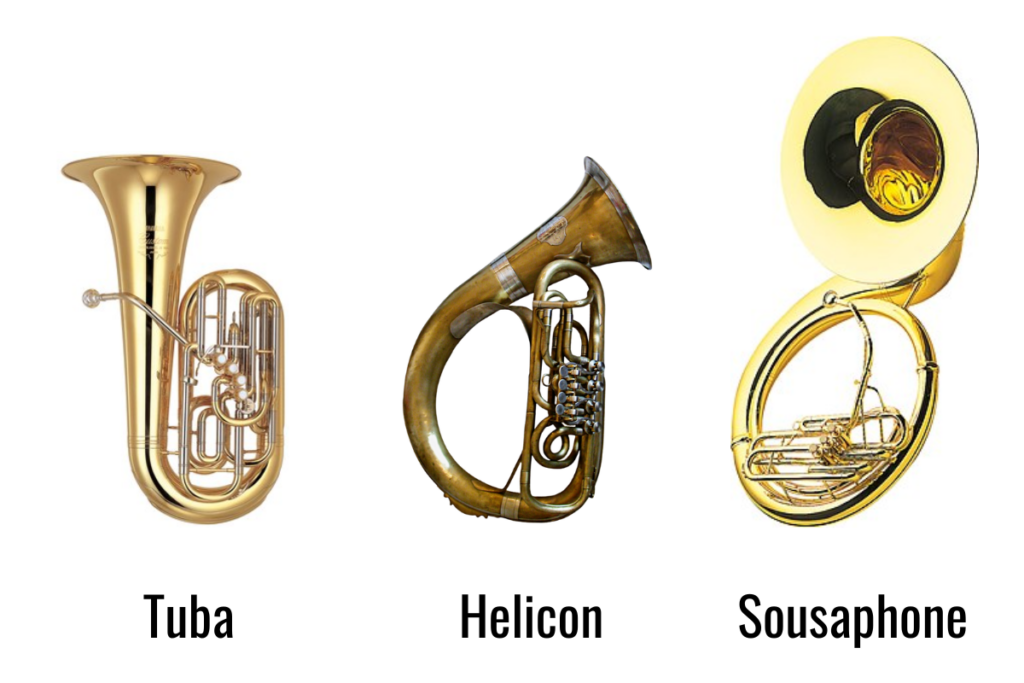
What the helicon? (And tuba and sousaphone?)
Most people think of the sousaphone as something found in marching bands. In fact, it was developed to be a concert instrument. Chronologically, the tuba preceded the helicon, which was followed by the sousaphone.
The helicon was a tuba that was bent to sit on the shoulder while wrapping around the musician. The bell pointed up, for a more diffused sound. John Philip Sousa, then conductor of the U.S. Marine Band, wanted an instrument that could be better heard above the band, which led to the modern sousaphone design with the bell pointed forward. (By modern I mean 1893.)
Look out for Forrest and hear members of this brass family in action in Wynton Marsalis’ Violin Concerto in D at COPLAND—AMERICAN TRADITIONS, Saturday, September 30 at 7:30 p.m. and Sunday, October 1 at 4 p.m. at the Lesher Center for the Arts in Walnut Creek. Tickets are $45 to $90 and $20 for students 25 and under, and include a free 30-minute pre-concert talk starting one hour before the performance. Buy tickets online or call or visit the Lesher Center Ticket Office at 925.943.7469, Wed – Sun, 12:00 noon to 6:00 p.m.

